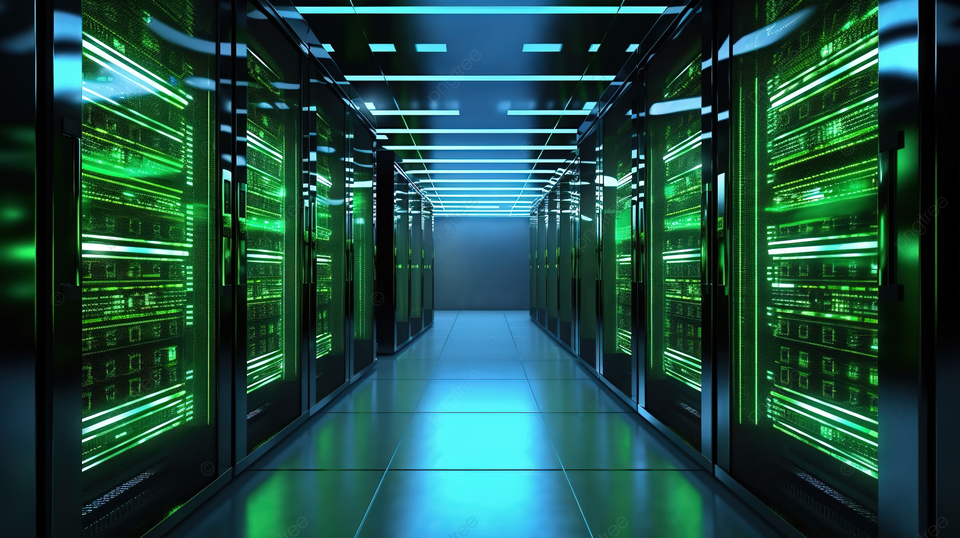
The rise of artificial intelligence is prompting European data center developers to confront environmental challenges, as growing demand for high-powered, energy-intensive facilities pressures the industry to adapt. AI’s increasing reliance on powerful chips, particularly from companies like Nvidia, demands lower water temperatures for cooling, leading developers to question the sustainability of data center infrastructure in Europe.
Research from Goldman Sachs forecasts that AI will drive a 160% increase in data center demand by 2030. This expansion poses a potential obstacle to Europe’s decarbonization targets, as AI-specialized chips significantly raise energy consumption within these facilities. High-powered GPUs (graphics processing units), essential for AI model training, require concentrated computing power, generating considerable heat and necessitating more aggressive cooling measures. According to Andrey Korolenko, Nebius’ chief product and infrastructure officer, one square meter of a data center hosting Nvidia’s Blackwell GB200 chip consumes up to 120 kilowatts of energy—equivalent to the energy needs of 15 to 25 households.
As European developers respond to demands for lower water temperatures, some industry figures raise concerns about sustainability. Michael Winterson, chair of the European Data Center Association (EUDCA), warned that such cooling requirements could drive Europe back toward unsustainable practices, reminiscent of conditions from 25 years ago. Winterson pointed out that AI is a competitive market primarily driven by American interests, where sustainability and energy concerns rank below expansion priorities. Major European equipment providers report that U.S. chip designers are requesting colder water for their AI chips, a shift away from the previously anticipated move toward efficient liquid cooling technology, which maintains higher temperatures than traditional air cooling.
The European Commission aims to reduce energy consumption by 11.7% by 2030, though AI advancements may push data center energy use significantly higher, with projections suggesting potential increases two to threefold in some countries. Winterson asserted that reducing water temperatures is “fundamentally incompatible” with the EU’s Energy Efficiency Directive, which mandates that larger data centers publicly report power usage. The EUDCA has been lobbying the European Union to address these sustainability issues.
In conversations with the EU, energy management company Schneider Electric has proposed sourcing “prime power” and exploring partnerships with utility providers to meet the energy needs of AI data centers. Schneider Electric’s Steven Carlini, vice president and AI advocate, noted that while cooling is the second-largest energy consumer in data centers, lowering water temperatures may not necessarily improve Power Usage Effectiveness (PUE) despite the additional workload for chillers. For Nvidia’s Blackwell GB200 super chip, some Schneider Electric clients have requested water temperatures of 20-24 degrees Celsius, contrasting with liquid cooling systems that typically operate around 30-32 degrees Celsius.
Industry leaders like Equinix’s vice president of data center operations, Ferhan Gunen, have acknowledged discussions with clients about increasing server density and power usage for AI deployments. However, Gunen noted that this transition is an “evolution discussion,” with newer data centers incorporating liquid cooling technology as part of their design. Nvidia, which launched a platform for its Blackwell GPUs in early 2024, claims that the architecture can support large language models at up to 25 times less energy consumption compared to earlier technology.
Nebius, which recently separated from Russia’s Yandex and holds $2 billion in cash, is set to bring Nvidia’s Blackwell platform to its customers by 2025. The company plans to invest over $1 billion in AI infrastructure in Europe by mid-2025. While liquid cooling is seen as a critical first step, Korolenko cautioned that initial ownership costs could be high before improvements take effect, adding that power efficiency is a top priority to keep operating expenses in check.
Sicco Boomsma, managing director at ING’s TMT team, remarked that power availability remains a sensitive issue, with U.S. operators expanding assets in Europe to secure energy sources. Boomsma observed that U.S. data center companies aim to demonstrate that their facilities align with EU carbon neutrality and water conservation goals, positioning themselves in a “race” to showcase highly efficient infrastructure.
Featured image courtesy of Pngtree
Follow us for more updates on AI and energy use in data centers.
